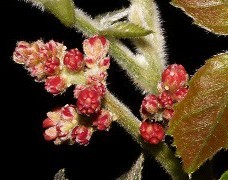Alectryon subdentatus
(Alectryon subdentatus)

Description
Alectryon subdentatus is a species of Magnoliopsida first described by George Bentham, and given its simplified Asian name by Ludwig Radlkofer. Alectryon subdentatus belongs to the genus Alectryon, and the family Sapindaceae. Single subspecies: A. s. pseudostipularis. Alectryon is a genus of about 30 species of trees and shrubs from the family Sapindaceae. They grow naturally across Australasia, Papuasia, Melanesia, western Polynesia, east Malesia and Southeast Asia, including across mainland Australia, especially diverse in eastern Queensland and New South Wales, the Torres Strait Islands, New Guinea, the Solomon Islands, New Caledonia, New Zealand, Vanuatu, Fiji, Samoa, Hawaii, Indonesia and the Philippines. They grow in a wide variety of natural habitats, from rainforests, gallery forests and coastal forests to arid savannas and heaths. Mainland Australia, especially the eastern Queensland and New South Wales rainforests and the monsoon tropics, harbours the global centre of Alectryon species diversity, having 15 species, 12 of them endemic to Australia. In the continent of, combined New Guinea including Papua New Guinea and West Papua, Australia and all of their continental islands, including the Torres Strait Islands, known collectively in biogeography as the Sahul continent, lives the even greater diversity and endemism of 21 and 19 species, respectively. Species height varies form low shrubs to trees of 30 m. Their leathery leaves may be simple or pinnate foliage. Small flowers, form usually at the ends of the stems. Fruiting follows, when ripe each fruit opens along a rough edged split revealing a seed, often black, surrounded by a fleshy aril, often red. These juicy aril appendages attract birds and other seed dispersing animals.
Taxonomic tree:







